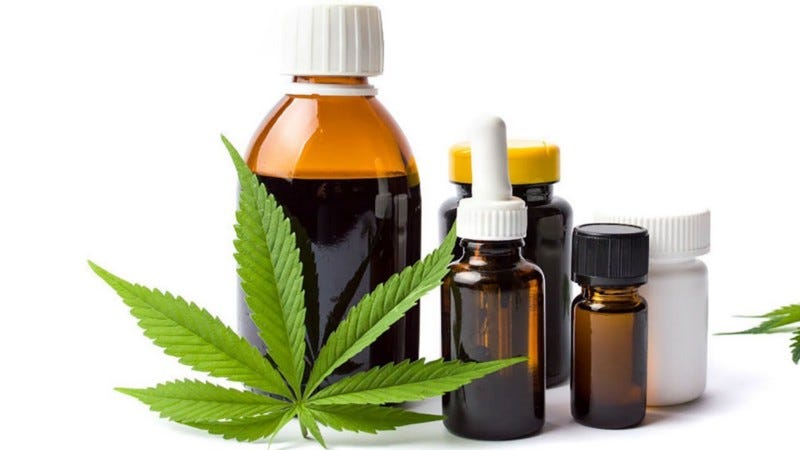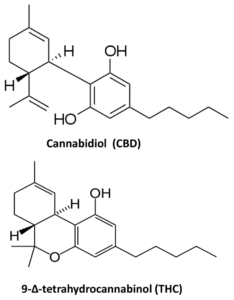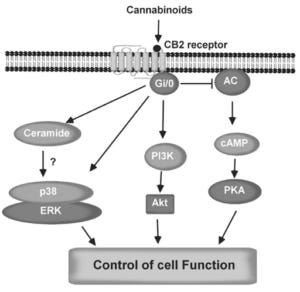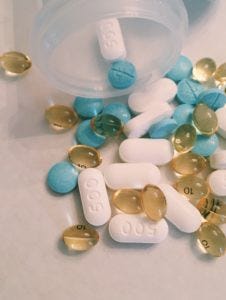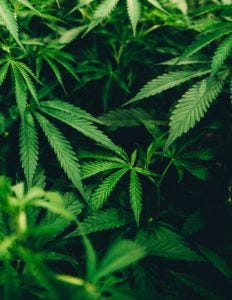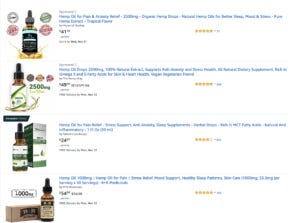Can CBD Oil Replace Traditional Painkillers?
It’s difficult to ignore the unprecedented rise of Cannabidiol, or CBD, in the fitness space, especially among the powerlifting community…
This article was originally published on my personal Medium account.
It’s difficult to ignore the unprecedented rise of Cannabidiol, or CBD, in the fitness space, especially among the powerlifting community. Not to be confused with traditional cannabis consumption and its psychoactive components, CBD is not a psychoactive drug and serves predominantly to treat pain and anxiety. Experiencing some level of aching, pain, and soreness is an inevitable burden of an active lifestyle, so the appeal of an all-natural alternative pain killer is patently obvious. Despite much of the stigma surrounding the cannabis industry, people have steadily warmed up to the notion that cannabis products are not Satan’s boon. Just take a look at the spike in interest represented by the Google Trend data:
As I swiped away Instagram posts and scrolled past advertisements for what some are deeming a cure-all, the clueless cynic in me couldn’t help but begin to ponder on the efficacy, safety, and legitimacy of the product.
If you’re in the same camp as me, worry not; I’ve done our due diligence and compiled a lot of compelling evidence for and against using CBD, and the long story short is that it’s not as hokey as you may think.
Here, I’m going to address the three pillars of drug/supplement value:
Efficacy — How well does CBD actually work for killing pain?
Drawbacks — We’ll delve into the dirty details, like risks, side effects, cost, and how it compares to similar products touting similar effects.
Worth it? — Based on our findings, we’ll effectively conclude whether or not CBD may be the right fit for you.
The Endocannabinoid System — How CBD Addresses Inflammation
Before I address CBD directly, it’s prudent to understand how the Endocannabinoid System functions physiologically. The literature surrounding this topic has developed quite a bit in recent years. The science primarily analyzes how receptors known to react to compounds in cannabis may impact various fields of health. In particular, endocannibinoid research primarily deals with inflammation and appetite control, and the psychoactive properties of some cannabinoids. We could get lost in the details, but I’ll simplify so as to avoid missing the forest for the trees. Endogenous cannabinoids found in the body are synthesized and degraded by cannabinoid receptors. Much of the medicinal and symptomatic properties are brought about by two G protein-coupled receptors (or GCPR’s, for short): CB1 and CB2.
CB1 receptors are primarily responsible for eliciting the psychoactive effects of Cannabinoids. They are largely located near the nervous system, and are known to be acted upon by compounds like THC, which deliver the high of smoking marijuana.
CB2 receptors are more closely tied to immune cells and neurons, and result in an anti-inflammatory and pain-killing effect when bound to cannabinoids such as CBD. (1) (2)
For the longest time, the body of research surrounding cannabinoids tended to focus largely on THC, as it was believed that it was the active compound and, thereby, the compound of interest. (3) The good news is that CBD is non-psychoactive. You don’t have to get high to reap the anti-inflammatory benefits of cannabis. Cannabidiol has been demonstrated time and time again to be an effective deterrent of inflammatory agents like TNF-a, IL-6, COX-2, and A2A receptors. (4) Specific studies cited positive effects for subjects with:
Corneal (eye) inflammation (5)
Arthritic inflammation (6)
Pulmonary (lung) inflammation (7)
Symptoms of multiple sclerosis (8)
Intestinal inflammation (IBS) (9)
Epilepsy (10)
Cancer sensitivity to chemotherapy (11)
But Is the Oil Completely Loyal?
Effects on Muscle Hypertrophy
Though the anti-inflammatory effects of CBD are largely irrefutable, there is always a catch (or, in this case, several) when it comes to any drug.
For one thing, ibuprofen acts on similar physiological mechanisms to CBD, and lends itself well as a generally safe and sustainable alternative to pain killers like acetaminophen. (12) For the folks that float the all-natural boat, CBD would thereby earn its keep as a natural alternative to ibuprofen. Let’s not forget, however, that ibuprofen has been demonstrated to have detrimental long-term effects on hypertrophy and muscle gain, which is a major disservice if your goal is strength-, aesthetic-, or health-oriented. (13) This is believed to be due to ibuprofen’s inhibition of COX-2, an inflammatory agent that has some significance in the mechanisms of muscle hypertrophy. Likewise, as discussed earlier, CBD elicits a similar anti-COX-2 effect, and may very well be detrimental in a similar fashion. (14)
Long-Term Safety
Despite the evangelical praise from proponents of CBD for its apparent safety, the fact of the matter is that the drug has not been under the limelight long enough to be put through its paces in a long-term scientific setting. (15) The implications of long-standing CBD use are simply an unopened Pandora’s box at this juncture, and none can conclusively speak on its sustainability into the distant future. Taking it regularly means that you are subjecting yourself to becoming a scientific guinea pig of the community.
Legality and Lack of Regulation
In many jurisdictions, cannabis products (psychoactive or otherwise) are prohibited by law. If you plan on using cannabis products of any kind, you may have to jump through legal hoops just to gain access. Beyond that, the use of CBD in competitive sport is a gray area. Until very recently, the World Anti Doping Agency (commonly abbreviated as WADA) had enveloped CBD products into its ban on all cannabis products. Even though CBD is now permitted by WADA, not every competitive organization adheres by WADA’s guidelines, and all other cannabis products are still considered banned substances. (16)
On that note, not all CBD products contain purely CBD. Extracting solely CBD from cannabis is a convoluted process, and it is entirely plausible that traces of other cannabinoids could wind up in your mixture. As with other supplements and drugs, such as preworkout, not all CBD products are created equally. The lack of regulatory scrutiny only exacerbates these pitfalls; you can’t be absolutely certain about the contents of your CBD product. On top of all of that, the dosage requirements for CBD vary wildly by case to case, and if manufacturer’s are not truthful in their labeling, you may be in for more dose experimentation than worth bargaining for.
The Verdict
While CBD undeniably has positive pain-killing effects without the highs provided by its counterparts, like any drug it comes with its drawbacks and should be used sparingly. Like Ibuprofen, occasional usage is unlikely to result in any significant detriment, but you probably wouldn’t take Ibuprofen every day, either. Still, if it’s legal in your area and won’t cost you qualification in a competitive sport, it’s safe enough to earn my personal stamp of approval.
If you decide to purchase a CBD product, you can find them in oil form, which can be consumed or applied topically, and capsule form. Due to my lack of personal experience with the product, I can’t shill for any brand in particular, but there are plenty of options available on Amazon, all of which hover around the price point of 40 dollars.
10–20 mg appears to be an effective dosage for mitigating pain, so 2500 mg should be more than enough for quite some time. Just be sure to do some basic research behind the brand and gather data from both users and critics to ensure that you get the best value for your money and a properly dosed product.



